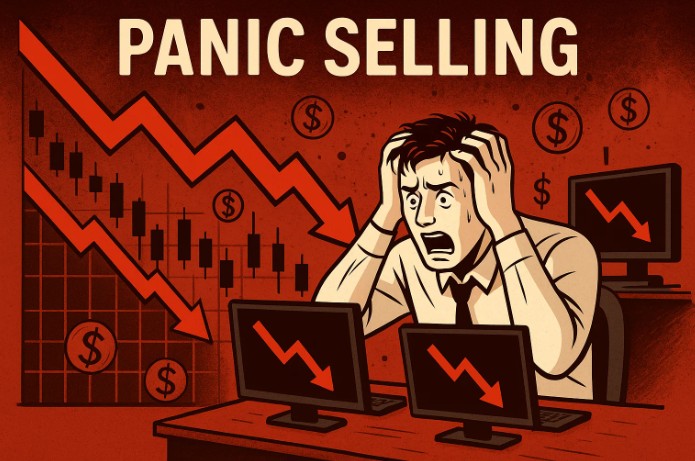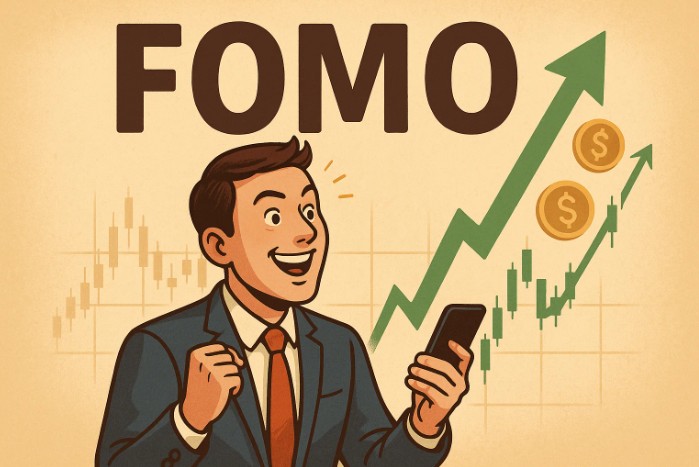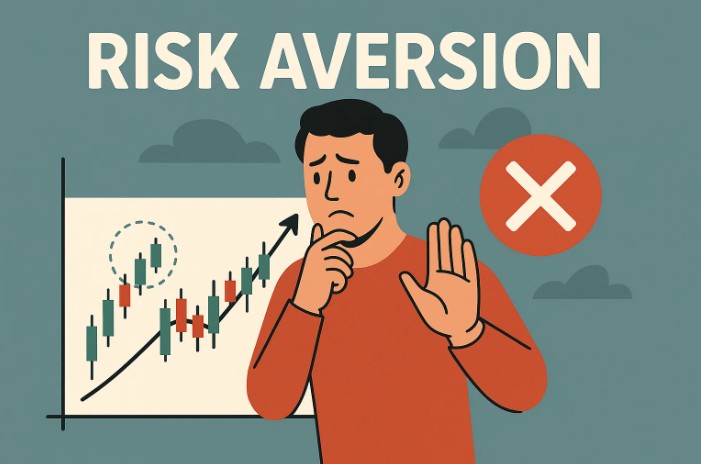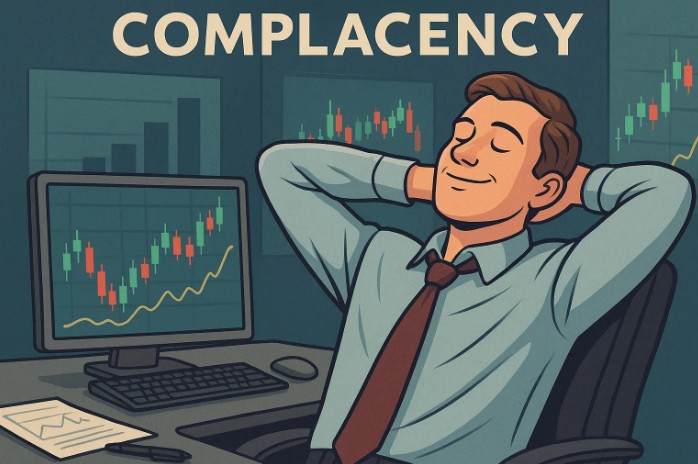
Fear and greed are two emotions that move the markets more than any news headline or economic report. They show up in price swings, trend reversals, and even in the trades we avoid.
Most traders either try to ignore these feelings or refuse to admit they acted on them. The better approach is to understand how fear and greed influence investors as a whole and take precautions to manage them.
Fear and greed are emotional reactions that tend to affect how traders behave. Fear shows itself as hesitation, panic selling, or skipping good setups. Greed pushes traders to open too many positions without a plan and ignore risk management.
These emotions aren’t random. They’re tied to how the human brain reacts to uncertainty and reward. Losing your control on them often leads to poor timing, inconsistent decisions, and losses.
Markets tend to swing between fear and greed. When fear dominates, prices fall faster than logic would suggest. When greed takes over, prices rally far beyond fair value.
Emotions show up in trading in more ways than most people expect. They don’t just influence big decisions, they influence how we enter, manage, or exit trades.
Let’s look at the most common fear and greed behaviors that catch traders off-guard.

This happens when fear takes over during a sharp drop. Traders rush to exit positions not because of strategy, but because of discomfort. It's a reaction to the pain of losing, especially when the move feels fast or unexpected.
Picture a market drop after unexpected political news or a surprise economic report. You see red across the board, and suddenly everyone hits the sell button. This is called panic selling, and it usually happens after much of the damage is already done.
How to manage it:

FOMO kicks in when traders see a big move and feel pressured to jump in late. It’s driven by greed, mixed with the fear that others are making money while you're on the sidelines. This often leads to chasing trades without a solid setup.
Think of a parabolic crypto rally or a tech stock hitting all-time highs. You didn’t plan to trade it, but now that it’s already up 15%, you feel the urge to get in before it’s “too late.” That urgency usually ends with poor timing and quick reversals.
How to manage it:

Risk aversion happens when fear makes you avoid taking trades, even when the setup checks all the boxes. This usually shows up after a losing streak or during uncertain markets. It’s not a strategy issue. It’s a mindset block caused by the fear of being wrong again.
Imagine seeing a setup that fits your plan, but you hesitate and skip it. Not because anything is wrong with the chart, but because your last two trades didn’t work out. The fear of another loss keeps you from taking a trade you would normally enter without hesitation.
How to manage it:

Complacency sets in when confidence turns into carelessness. It usually happens after a winning streak or during calm market conditions. You stop double-checking setups, increase position sizes without adjusting for risk, or ignore warning signs because things have been going well.
For example, a trader who's been profitable for weeks might start skipping analysis or overexposing themselves to one sector. They trust the recent results too much and stop preparing for what could go wrong.
How to manage it:
A Fear and Greed Index is a sentiment tool that tracks whether the market is leaning toward extreme fear or extreme greed. It combines multiple data points like market volatility, demand for safe-haven assets, option activity, and market momentum. The idea is simple: when fear is high, prices are often near a bottom. When greed takes over, markets may be overbought and vulnerable to a price correction.
This tool doesn’t tell you exactly when to buy or sell, but it can help you measure overall market sentiment and filter your decisions with more context.
Key components often used in a Fear & Greed Index include:
How to use it in trading:
In early 2023, fear surged across global markets due to banking sector instability in the US and Europe. Investors rushed into gold and the US dollar for safety, causing gold to spike above $2,000 while risk assets like equities and crypto dropped sharply. The Fear & Greed Index reflected extreme fear during this period.
A trader watching sentiment alongside price would have seen this shift and avoided risky longs in equities. Some took advantage of the panic by positioning early in gold once the flight-to-safety behavior kicked in.
After Nvidia's explosive earnings and forward guidance in May 2023, AI-related stocks rallied aggressively. Retail traders and funds piled in, and the Fear & Greed Index flipped to extreme greed. Prices extended far beyond technical support zones without healthy pullbacks.
Traders who chased during this wave often bought too late and got caught in the post-hype correction in June. Those using sentiment filters could have taken partial profits or waited for a reset before re-entering the trend.
Being completely emotionless while trading doesn’t sound like something a human can do. But it’s possible to reduce the effect emotions have on your trades. The key is building a system that helps you stay focused on your plan instead of reacting to every move the market makes.
On the other hand, trading without a plan or changing course based on gut feeling usually leads to mistakes. This is one reason why algorithms and Expert Advisors (EAs) can be helpful. They remove emotional noise and follow logic step by step.
Let’s look at how human trading behavior compares to algorithmic systems:
| A Trader | An Algorithm |
| Influenced by fear, greed, and confidence swings | Operates with no emotion or hesitation |
| May skip rules or second-guess decisions | Executes every trade based on defined parameters |
| Adapts to changing markets using context and discretion | Relies only on coded rules and back-tested conditions |
| Needs discipline, routine, and mental reset time | Runs continuously without fatigue |
| May react to headlines or noise | Ignores external input unless programmed to |
Set rules you can follow
Define entry, exit, risk, and size before placing a trade so you don’t act on what you feel in the heat of the moment.
Use checklists before execution
A short list of yes/no questions before entering a trade helps you stay focused on process over emotion.
Journal not just trades, but feelings
Write down what you felt during a trade, not just the result. Patterns often appear over time.
Limit screen-watching
The more you stare at price movement, the more likely you are to overreact. Set alerts or use time-blocked sessions.
Test automation tools
Even if you don't fully automate your strategy, try partial automation. Tools like EAs, copy trading filters, or rule-based trailing stops can help reduce reaction-based trading.
Why do I feel more stress after a winning trade than a losing one?
This usually happens when a win raises your expectations. After a profit, your brain starts focusing on not giving it back, which creates pressure to repeat the result. It may cause an overconfidence bias.
Can fear show up as over-preparation or analysis paralysis?
Yes. Not taking a trade because you're still “checking one more thing” can be fear in disguise. It feels like discipline, but often it’s just avoidance masked as caution.
Why do I only review my plan after something goes wrong?
Because discomfort is a stronger trigger for reflection than success. Most traders only stop to re-evaluate after a loss. But reviewing your process when things go well is where the real improvement happens.
Can greed exist even when I'm trading with small position sizes?
Definitely. Greed isn’t just about big size. It can also look like overtrading, forcing setups, or entering trades you didn’t plan for. All in the name of making "just a little more" today.
Is it possible to become too comfortable in a strategy that works?
Yes, and that’s when complacency creeps in. A strategy might work in one market phase, but if you're too comfortable to adapt when conditions shift, results can drop quickly. Staying sharp is part of staying profitable.
Do I need to be in the market every day to be a serious trader?
Not at all. That belief often comes from the fear of missing out or tying your identity on trading activity. Serious traders focus on high-quality setups, not constant action.
Why do I feel better after closing a trade, even when it was a small loss?
Because ending a trade gives you clarity. Holding onto trades full of uncertainty drains mental energy. Sometimes, exiting a position simply gives you back the control you lost while hoping things would improve.
 QuickTrade in cTrader: How to Place Trades Faster
QuickTrade in cTrader: How to Place Trades Faster
QuickTrade is a built-in cTrader feature that allows you to place trades directly from the chart, without opening the full order ticket.
Detail A Practical Guide to cBots on cTrader
A Practical Guide to cBots on cTrader
Discover cBots in the cTrader ecosystem, how they are added and used through cTrader Algo, and what to pay attention to when selecting a strategy.
Detail cTrader Shortcuts: 15 Tips to Upgrade Your Experience
cTrader Shortcuts: 15 Tips to Upgrade Your Experience
This guide highlights 15 practical shortcuts and settings that upgrade your cTrader experience.
DetailThen Join Our Telegram Channel and Subscribe Our Trading Signals Newsletter for Free!
Join Us On Telegram!